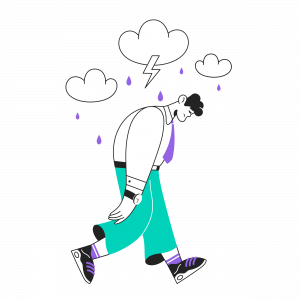Why Mental Health Should Be Your Company’s Next Big Investment: The Power of Gamification for Employee Wellbeing
May 18, 2023
Introduction
In an era where mental health has gained the spotlight, it is surprising how many companies are yet to prioritize it as a part of their corporate strategy. The impact of mental health on productivity, engagement, and overall job performance is substantial, which is why mental health should be your company’s next big investment. One innovative approach that has gained traction is the introduction of gamification in promoting employee wellbeing.
 Understanding the Impact of Mental Health
Understanding the Impact of Mental Health
Before we delve into the gamification aspect, it’s crucial to understand why mental health needs to be at the forefront of your company’s priorities. Mental health disorders are among the leading causes of disability in the U.S., affecting approximately one in five adults, according to the National Alliance on Mental Illness.
A study published in the National Library of Medicine demonstrated that depression alone results in an estimated annual cost of $44 billion in lost productivity in the U.S. Moreover, employees with untreated mental health issues are less productive, less engaged, and more likely to take sick leave.
The Role of Gamification
So, where does gamification fit into this picture? Gamification is the application of game-design elements and game principles in non-game contexts. It can be a powerful tool to motivate employees, improve learning outcomes, and promote behavioral changes.
Gamification leverages our natural desire for competition, achievement, and collaboration. It turns tasks that may seem mundane into engaging activities, leading to increased motivation and a sense of accomplishment.
 Gamification and Mental Health
Gamification and Mental Health
Research has shown that gamification can be an effective tool in promoting mental health. A study published in the Journal of Medical Internet Research found that a gamified online cognitive behavioral therapy program significantly reduced symptoms of depression and anxiety among participants.
Workplaces can use gamification to encourage healthy behaviors, such as regular exercise, mindfulness, or maintaining a balanced diet, all of which have been shown to improve mental health. For instance, companies could introduce a wellness challenge where employees earn points or badges for reaching certain health goals.
Successful Examples
Several organizations have successfully implemented gamification to promote employee wellbeing. For example, Google’s ‘Fit’ program encourages employees to track their physical activities and rewards them for their efforts. The success of such initiatives lies in their ability to foster a sense of community and camaraderie while promoting mental health.
In this article I discussed how I created a gamification in our platform and app that helped me gain healthy, sustainable habits and a similar concept can be created to promote wellbeing among employees.
Conclusion
Investing in mental health is not just about doing the right thing for your employees; it’s also a smart business move. By incorporating gamification into your company’s mental health initiatives, you can create an engaging, supportive environment that promotes wellbeing and drives productivity. Remember, a healthy, engaged, and happy employee is your company’s greatest asset.
4
Recent posts

